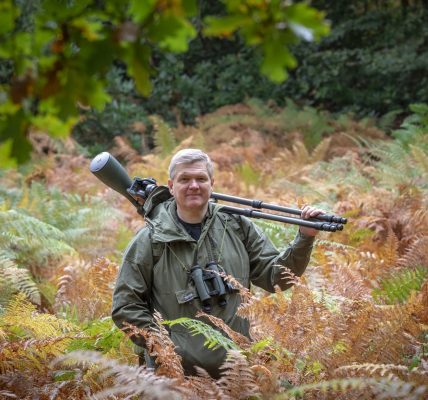RNLI stalwart on emotional loss of Filey's famous Mersey lifeboat: 'I brought her here in 1991 and now she is gone'
RNLI stalwart on emotional loss of Filey's famous Mersey lifeboat: 'I brought her here in 1991 and now she is gone'
Filey recently bade a moving farewell to its much-loved Mersey lifeboat after over 350 missions – now the man who brought her to US 30 years ago is sharing his memories of rescues, tragedies and changing times. Chris Burn reports. Main pictures by James Hardisty.
For Graham Taylor it is a day that remains etched into his memory.
“When we brought the Mersey home to Filey on May 21, 1991, there were hundreds of people there to welcome us; schoolchildren had even been given time off,” he recalls.
“I was being interviewed for television after we arrived and I said, ‘Do you know, this is the best day of my life’. When I said it, I was stood next to a fisherman’s wife who I had known since I was a baby and was quite a fearsome lady. She interrupted and said: ‘Graham, the best day of your life was when you married Margaret!’ I had to apologise,” he says with a laugh.
While on reflection it might not quite have been the very best day of his life, the arrival of the Mersey class all-weather lifeboat (officially called after the organisation which part-sponsored it) was an incredibly cherished moment for Taylor and Filey’s coastal community.
The boat’s speed, capabilities and facilities which allowed the crew to sit inside rather than being exposed to the elements – as had been the case previously – far exceeded what had been available before.
Over the following three decades, it went on to be involved in saving countless lives at sea.
Memories have been reignited after the Mersey was retired from service last month. As dawn broke on April 29, Taylor was among the crowds on Filey’s Coble Landing who gathered to watch the boat set sail to Lowestoft where she is being kept until a decision is made on her future.
“It was very emotional but there were quite a lot of people down there which was good. It shows the support that the town has for the lifeboat station,” he says. “I felt quite sad really watching the boat going out into the water and disappearing forever. I brought her here in 1991 and now she is gone.”
The RNLI is replacing the Mersey with an Atlantic 85 inshore lifeboat, a rapid response vessel that will act in the same way that an ambulance first responder vehicle does on land. Should a larger lifeboat be required for a rescue, it can be called from either Scarborough or Bridlington.
Taylor says he reluctantly understands the rationale behind the move – particularly given Filey’s shift away from being a fishing community over the years, which has changed the nature of rescue operations.
“Fishing boats still break down but the RNLI is funded by voluntary contributions and in the last three or four years they have placed all-weather lifeboats at Scarborough and Bridlington. If somebody breaks down at the end of Filey Brigg, the Scarborough lifeboat can be there in 10 minutes. They can’t warrant putting another one six miles from Scarborough.
“They are dealing with public money. The Atlantic 85 which is going to be here has got a 35-knot speed and they can be a first responder.”
Taylor is now 78 and his official association with the RNLI goes back to 1963, when the then-20-year-old fisherman was asked to join the Filey crew as a part-time volunteer.
Taylor says he still vividly remembers the day he was asked to join the crew – an opportunity he almost turned down.
“A man came out from the boathouse and said Dag, which was the nickname of the coxswain Bill Chapman, wants you to join the crew. I just said, I haven’t got time today. My father-in-law who was an ex-lifeboat man said, ‘Don’t say that, go down there – you are only going to get asked once’.”
But in common with many of his generation in Filey, his connection with the town’s lifeboat service began at a much younger age.
“We used to go down as teenagers to help out on the beach when the boat was being retrieved. We were known as ‘skeeters’ – you would put down quite big planks of wood on the beach and pull the lifeboat onto the planks. You got paid 10 shillings, which was quite a lot of money.”
He says growing up in Filey’s fishing community quickly taught you to understand the dangers of the sea.
“The sea is a killer. I was told by a fishing skipper when I was young: ‘Don’t you forget, they tame lions out here’. You had to have a great respect for it.”
The first RNLI boat that Taylor served on between 1963 and 1968 was the Liverpool Class , which was subsequently replaced by the more powerful Oakley Class .
In both cases, they were open water boats – meaning there was nowhere for the crew to shelter as they headed out on rescue missions in often terrifying conditions.
“We were out on the deck whether we liked it or not,” he recalls. “Some days it wasn’t very nice. You had to be very careful and you put your trust in the coxswain.
“When I first joined, to be quite honest we didn’t wear our life jackets all the time. We were all fishermen in those days on the crew and we lived with it every day. So if Bill Chapman said ‘Put your belts on’, you knew it wasn’t going to be very nice.
“In those days we had a very big fleet of fishing cobles at Filey. If the weather turned, the end of Filey Brigg could be a killer.
“We would launch the lifeboat to assist the cobles back to Filey. We had oil pumps and would pump vegetable oil out to calm the seas down. We would get in as close as we dared and pump the oil across the cobles and it did work. The phrase ‘pouring oil on troubled waters’ is a true saying.”
In June 1974, tragedy struck when the crew’s full-time mechanic, Bob Appleby, collapsed and died from a heart attack just as a rescue was being launched to a cabin cruiser sending out distress flares in bad weather.
“We had the boat out and were setting off into the sea and Bob collapsed. I said ‘Bob, now is not the time’ because he was a bit of a practical joker. But he had died,” says Taylor.
After Bob was taken off the boat by helicopter, the devastated crew continued with their rescue mission. “We continued with the job because that is what we were there for. But it was very difficult.”
Following his friend’s death, Taylor was asked to take on a full-time role with the RNLI. He initially worked as a mechanic and then eventually became coxswain mechanic in charge of the lifeboat’s machinery and operation, taking on that position in 1988.
He says the arrival of the Mersey class lifeboat in 1991 was an incredible eye-opener. “We went from 43 horsepower engines to 500 horsepower for a start. All the crew were now inside. When we were going to a job, we were all sat down with the watertight door shut and you could even make a cup of tea.
“The boat is 1,000 times safer. In November 1991, there was a fishing trawler from Scarborough that went missing and we spent 15 hours searching for survivors. That is a long time at sea. We were safe inside and you only had to have a couple of people out on deck at a time. With the old lifeboat, we would have still stuck it out for the same amount of time because that was the way it was but it would have been a lot harder.”
Taylor had to retire from sea-going operations in 1998 at the age of 55 due to RNLI age-limit rules – the same year he was awarded an MBE for his decades of life-saving service.
He spent five years as a tractor driver, helping with launches from the beach followed by a further five in the role of deputy launching authority – a key job involving deciding whether or not to launch a lifeboat when contacted by the UK Coastguard about a vessel in distress. “I ended up retiring three times,” he says with a smile.
Taylor says that as the RNLI has changed down the years, so has the character of Filey as fishermen gradually migrated to Scarborough, which has the advantage of a harbour.
“We have lost our fishing fleet at Filey. Coble Landing used to be full of 30ft US cobles. Now we have no full-time fishermen at all.”
He says the departure of the Mersey has been a very poignant time.
“I would have loved that boat to be here when I am not here. But things have moved on. It is just a lovely lifeboat.
“When you went out on her to a rescue, we all got there and we all got back. That is all you can ask for.”










